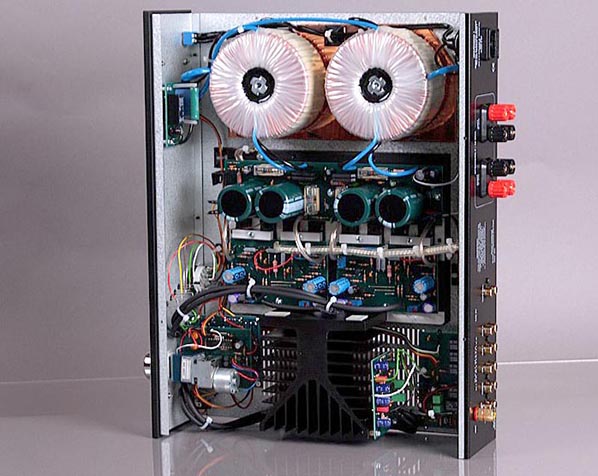With the Ubiq, the Struss managed to nearly shake the walls with deep powerful punchy bass. This was a highly energetic reading whose center of gravity sat quite low, with a rich slightly dark sound filled with very good low-level resolution and at the same time being open and unforced. In both cases listening was very enjoyable and emotionally engaging. For me this doesn't happen so often with solid state. Coincidentally, I could use the same descriptions to define the differences between these speakers. Both are excellent although very different in almost every respect and the DM-250 allowed each of them to present their better sides and create immersive exciting musical performances with both of them.

The conclusion from the first sessions was that the Struss integrated did not belong to the type which tends to impose its own point of view or sonic character or at least does it to a much lesser extent than most I know, especially those at relatively reasonable prices.
 This should be one of the basic tips for potential buyers. You should know that you won't be able to use the DM-250 to shape/tune the sound of your system or change it in any specific direction. That direction must already be set by other components. The expected result of adding Struss to the mix will be to maintain that sonic signature but also to invigorate it a bit, to make it sound more dynamic and saturated with energy. The DM-250 may slightly lower the center of gravity which should largely depend on the speakers but these changes will be rather minor.
This should be one of the basic tips for potential buyers. You should know that you won't be able to use the DM-250 to shape/tune the sound of your system or change it in any specific direction. That direction must already be set by other components. The expected result of adding Struss to the mix will be to maintain that sonic signature but also to invigorate it a bit, to make it sound more dynamic and saturated with energy. The DM-250 may slightly lower the center of gravity which should largely depend on the speakers but these changes will be rather minor.
This integrated also ensures that the frequency extremes don't dominate. Bass may be powerful and agile but it should be focused and never dominate. Headroom will easily be sufficient to properly manage pace and rhythm with almost any speaker. The treble will be a bit on the safe side, meaning one needn't worry about any brightness or aggression unless one feeds the Struss with this type signal or combines it with particularly strident speakers. But it does not tend to polish or round off the sound so doesn't hide problems in the system or recordings.
As already suggested, one should expect that the DM-250 will amplify not only the source signal but the advantages of the entire system it's been made a part of. Importantly, amplifying the qualities of my speakers did not come at the expense of any advantages of my digital or analog sources that I am really fond of.
Compared to my class A GrandiNote Shinai integrated, especially the Ubiq speakers sounded a bit more effortless and energetic due to the far higher headroom. The smoothness and sonic flow as well as what for transistors was more-than-good palpability and spatiality were truly impressive.
The new Struss is admittedly not the best amplifier in the world when for a much higher price, music can be presented in an even more refined, resolving and precise manner. But that does not change the fact that I know of only a handful of competitors at this price level which do not try to overlay their sonic signature on my whole system to some extent. Most have a specific sound signature or house sound which strongly influences what comes out of my speakers. The Struss had very little self sound and this was yet another important quality.
{Above, the Struss Chopin from our 2009 review of it to show how the overall layout carried over. –Ed]